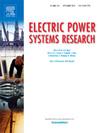协同规划电网负荷存储,增强有源配电网的功率均衡能力
IF 3.3
3区 工程技术
Q2 ENGINEERING, ELECTRICAL & ELECTRONIC
引用次数: 0
摘要
随着大规模dg和fl的插入,不同领域的电力供需日益分化。这一现象凸显了在配电网规划和运行中加强对电力平衡的考虑的必要性。本文提出了一种基于中国配电网网格模式的协同规划方法——NLS法。它将单个资源的控制扩展为三种资源的协同规划,以达到最优的权力平衡和经济目标。首先,针对源负载的不确定性,提出了一种基于SDPA的WGAN算法,通过对输入输出功率匹配度设置权重,提高生成场景的质量;其次,基于源负荷和电特性构建BZ分区指标,采用改进的sptv遗传算法对配电网进行最优分区,使有效资源配置成本降低81%;最后,建立DR-ESS双层模型,DR优先,ESS辅助,实现两者协同优化,使DG吸收率提高10%以上。以中国浙江的一个GDN为例进行案例分析。结果表明,NLS协同规划方法降低了配电网的日运行成本,提高了38%的DG吸收量,降低了63%的供需不平衡。验证了该方法在改善配电网源负荷平衡方面的科学有效性和有效性。本文章由计算机程序翻译,如有差异,请以英文原文为准。
Co-planning of network-load-storage to enhance the power-balancing capability of active distribution networks
With the large-scale DGs and FLs plug-in, the power supply and demand in different areas are becoming increasingly divergent. This phenomenon highlights the need to enhance consideration of power balance in the planning and operation of distribution networks. This paper presents a co-planning approach called the NLS method based on the grid pattern of China's distribution network. It extends the control of individual resources to a co-planning of three resources, aiming to achieve optimal power balance and economic objectives. Firstly, to address the uncertainty of source-load, a WGAN algorithm based on SDPA is proposed, which improves the quality of generated scenarios by setting weights to the input-output power matching degree. Secondly, a BZ partitioning index is constructed based on source-load and electrical characteristics, and the SPTV-improved GA is used to achieve optimal partitioning of the distribution network, reducing the configuration cost of active resources by 81 %. Finally, a dual-layer model of DR-ESS is established, with DR prioritized and ESS as auxiliary, to achieve the collaborative optimization of both, improving the DG absorption rate by over 10 %. A GDN in Zhejiang, China, is taken as an example for case analysis. The results show that the proposed NLS co-planning method reduces the daily operating cost of the distribution network, improves DG absorption by 38 %, and decreases the supply-demand imbalance by 63 %. It demonstrates the scientific validity and effectiveness of the method in improving the source-load balance of the distribution network.
求助全文
通过发布文献求助,成功后即可免费获取论文全文。
去求助
来源期刊

Electric Power Systems Research
工程技术-工程:电子与电气
CiteScore
7.50
自引率
17.90%
发文量
963
审稿时长
3.8 months
期刊介绍:
Electric Power Systems Research is an international medium for the publication of original papers concerned with the generation, transmission, distribution and utilization of electrical energy. The journal aims at presenting important results of work in this field, whether in the form of applied research, development of new procedures or components, orginal application of existing knowledge or new designapproaches. The scope of Electric Power Systems Research is broad, encompassing all aspects of electric power systems. The following list of topics is not intended to be exhaustive, but rather to indicate topics that fall within the journal purview.
• Generation techniques ranging from advances in conventional electromechanical methods, through nuclear power generation, to renewable energy generation.
• Transmission, spanning the broad area from UHV (ac and dc) to network operation and protection, line routing and design.
• Substation work: equipment design, protection and control systems.
• Distribution techniques, equipment development, and smart grids.
• The utilization area from energy efficiency to distributed load levelling techniques.
• Systems studies including control techniques, planning, optimization methods, stability, security assessment and insulation coordination.
 求助内容:
求助内容: 应助结果提醒方式:
应助结果提醒方式:


